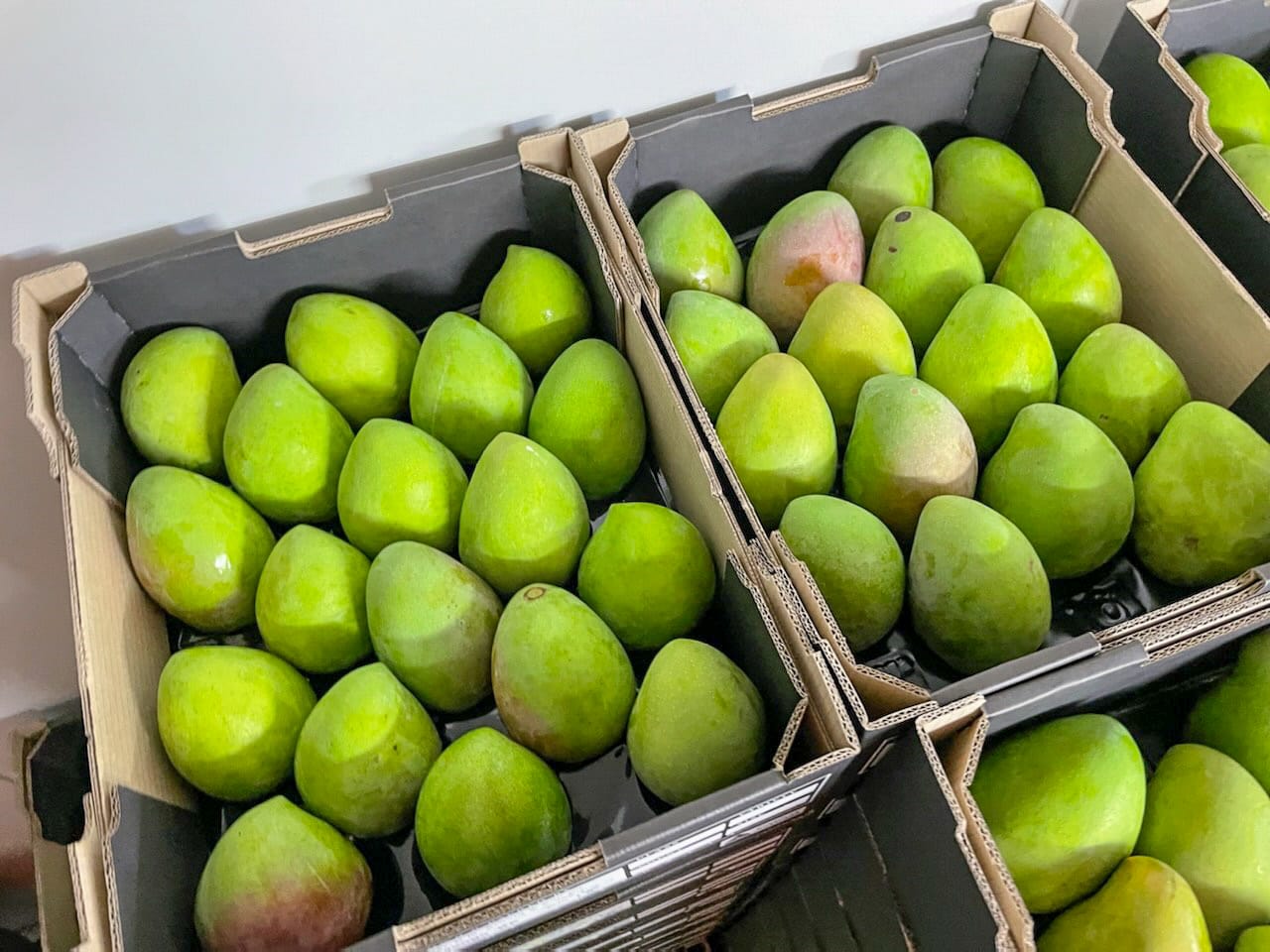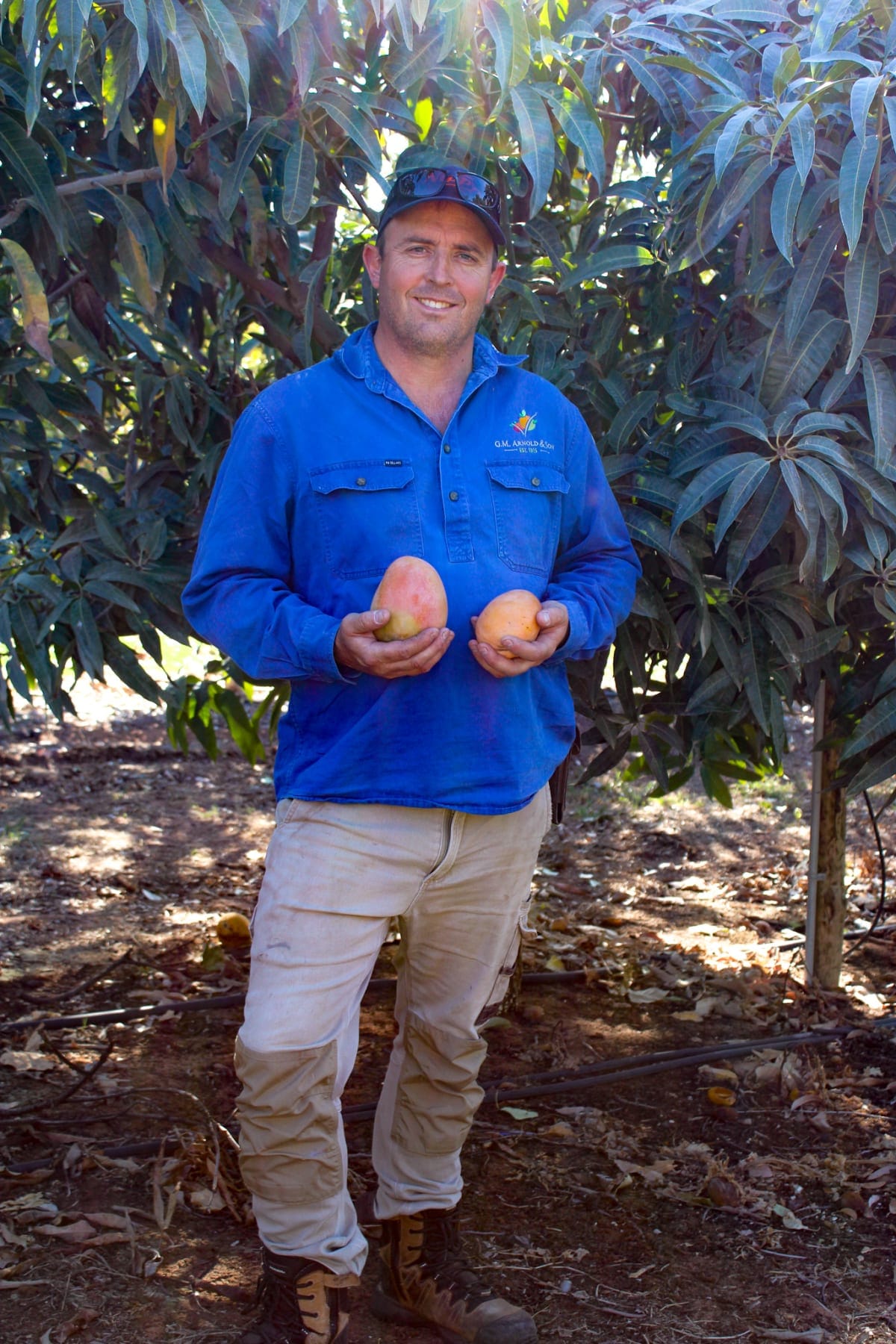Riverland mangoes making an entrance… Mango-nificent
LONG-established Waikerie fruit-growing business, G.M. Arnold & Son – in operation since 1915 – is making a foray into producing mangoes. For the Arnolds, five years of tending to a small orchard of kensington prides, traditionally grown in...

LONG-established Waikerie fruit-growing business, G.M. Arnold & Son – in operation since 1915 – is making a foray into producing mangoes.
For the Arnolds, five years of tending to a small orchard of kensington prides, traditionally grown in a tropical climate, have recently paid off with their best-ever harvest of about five tonnes.
G.M. Arnold and Son’s business manager David Arnold said growing mangoes on the edge of the season would hopefully enable the family business to diversify its income.
“You have got the run out and there is not much in the market,” he said.
“So you can hopefully take advantage of better pricing.”
Mr Arnold said with any luck, the kensington prides – the most popular variety of mangoes in Australia – would provide the company with another income source, if things go bad with other fruit crops.
“Or, if everything is going okay, it is just a little bit extra cream on top,” he said. “If you can get it right.”

Mangoes in Australia are traditionally grown in the tropical and sub-tropical regions of the Northern Territory, Queensland, New South Wales, and Western Australia.
The national season begins in September in Western Australia and the Northern Territory, continuing in the latter until November.
In Queensland, the harvest runs from mid-November in the state’s dry tropical regions, during late December in central Queensland and throughout January in south-east Queensland and northern New South Wales.
Here in the Riverland, the mango harvest for the Arnolds began in March this year, about two weeks earlier than expected.
Mr Arnold said 2022 was the first time the family had attempted to produce a reasonable crop, as the initial task was to establish the trees, which were planted five years ago.
The Waikerie mangos were sent mainly to clients in Melbourne, while a few trays were also sent to Adelaide.
“For the amount we had, Melbourne paid really well and that is the sort of market we would aim for,” Mr Arnold said.
We may branch into Sydney, if we get more fruit in the future.”
He said G.M. Arnold and Son’s plan was to concentrate on supplying the domestic markets with mangoes due to the strong demand for the fruit during autumn.
Mr Arnold said establishing the kensington pride trees in the Riverland’s Mediterranean climate had been a learning experience.
“We bought our trees from a nursery in Queensland and brought them down to the farm,” he said.
Mr Arnold said the key to producing a viable crop was ensuring the trees were planted in an area of their fruit property free of frost threat.
“We planted them on a northern slope,” he said.
“So any cold air is draining away, they are nearer to the river, with a lower likelihood of frost.
“You need to have the right conditions.”

Mr Arnold said the industry body, Mangoes Australia, advised it would be difficult to predict the characteristics mangoes may develop in a drier climate like the Riverland.
He said the mangoes his family grew had to be picked while they were still green, to ensure an optimum level of ripeness and attract consumers when they arrived in Melbourne and Adelaide.
Unexpectedly the fruit failed to turn yellow by the time they arrived in the marketplace, but the taste and quality was good.
They loved the flavour of them,” Mr Arnold said. “The internal was as good as any mango you could get.”
Mr Arnold said if consumers were educated about the greener Riverland kensington prides, they had potential to become a highly sought-after piece of fruit during autumn, when Australian mangoes are usually scarce.





